The Cooperative Road-Vehicle System:
Realizing the Safe and Convenient Transport Society of the Future
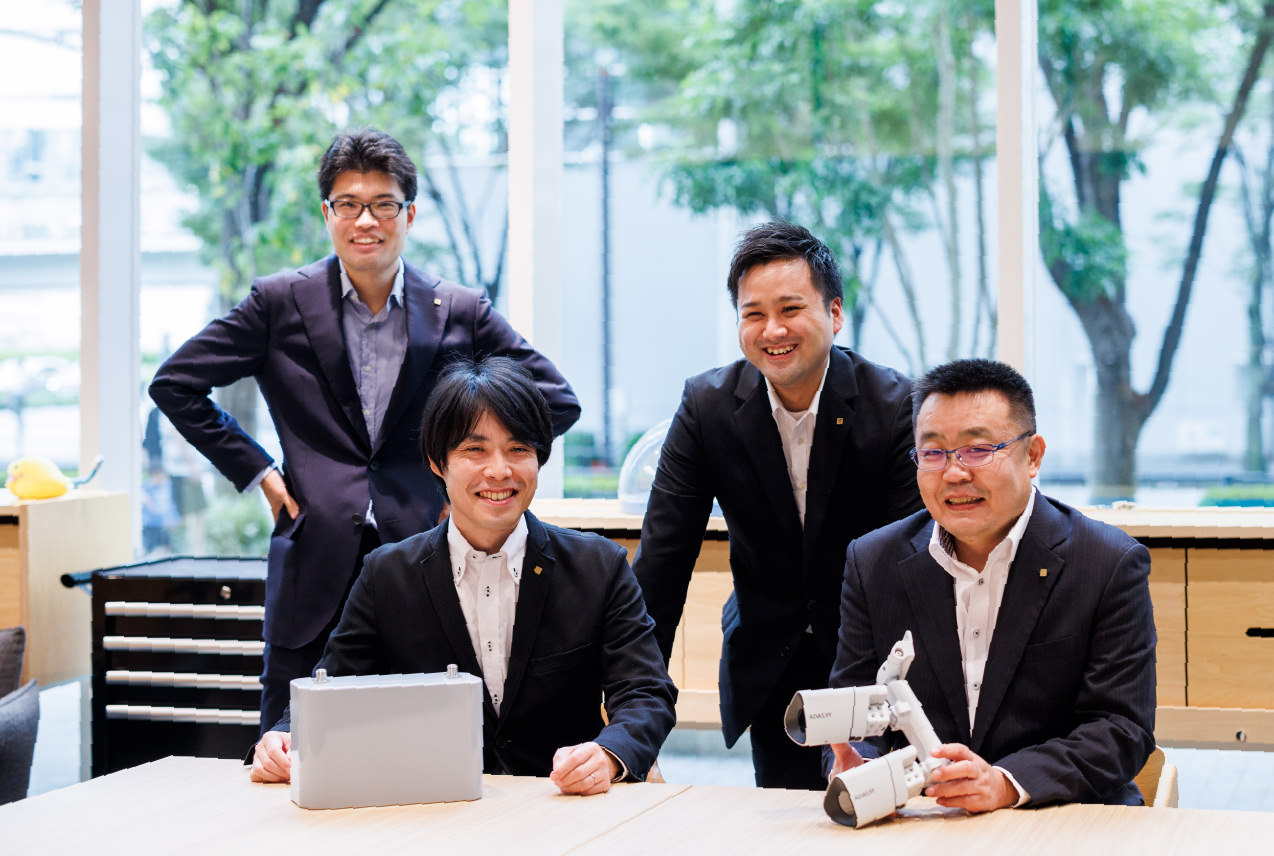

An Approach to Safety in Autonomous Driving Guided from the Roadside: Development Background of the Cooperative Road-Vehicle System
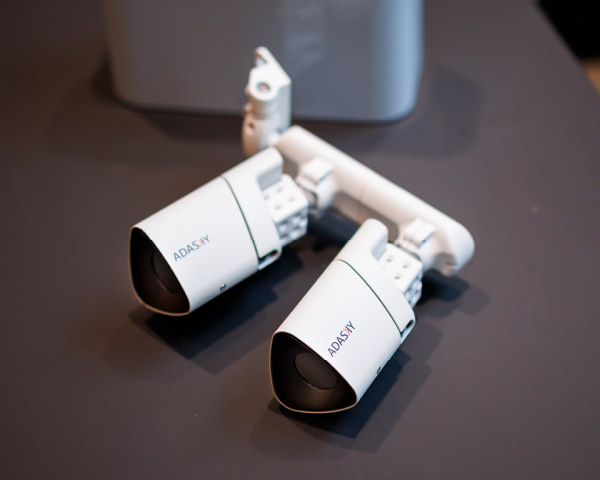

In order to provide transportation in local areas experiencing depopulation and an aging population, and from the point of view of preventing traffic accidents caused by human error, there is an ongoing and increasing need for autonomous driving. Therefore, the Ministry of Economy, Trade and Industry has launched its "Project on Research, Development, Demonstration, and Deployment of Autonomous Driving Toward Level 4 and its Enhanced Mobility Services (RoAD to the L4)*1" and considering cooperative systems to begin Level 4 autonomous driving*2 by 2025 in multiple regions in which various types of road traffic come together.
A world in which autonomous driving is the norm is already close at hand. However, many issues still need to be confronted to realize this. For example, how can drivers notice pedestrians and other vehicles in their blind spots? What must we do to reliably capture and transmit information without being affected by weather and temperature conditions? These problems are challenging to solve using technological innovation limited to vehicles alone.
Kyocera's Intelligent Transport Systems R&D Division is working on solutions to these problems. The department has developed a Smart V2I RoadSide Unit (Smart RSU), which capitalizes on Kyocera's telecommunication technology know-how, and a Far Infrared Camera Roadside Sensing System (FIR camera), which uses far infrared to perceive objects. By using these devices to realize the Cooperative Road-Vehicle System, we aim to deliver highly reliable information from the roadside to vehicles, thereby contributing to safe autonomous driving.
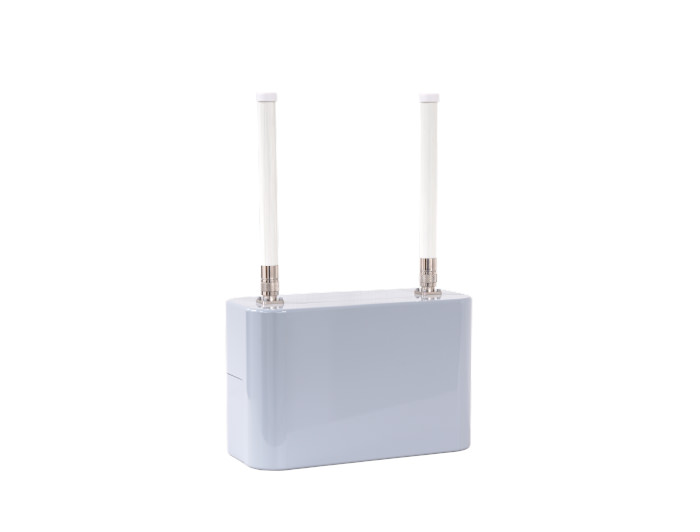
Wireless Roadside Device Smart V2I RoadSide Unit (Smart RSU)
This wireless roadside device can attach to objects such as utility poles and traffic lights at intersections where visibility is restricted. It communicates wirelessly with vehicles, bicycles, and so on and gathers and transmits information about the location of pedestrians and cars and about traffic infrastructure—for example, the status of traffic lights. In addition, it is possible to connect various devices, including the sensors on FIR cameras, and by transmitting information about blind spots detected by such sensors to vehicles, drivers of those vehicles are alerted to dangers.
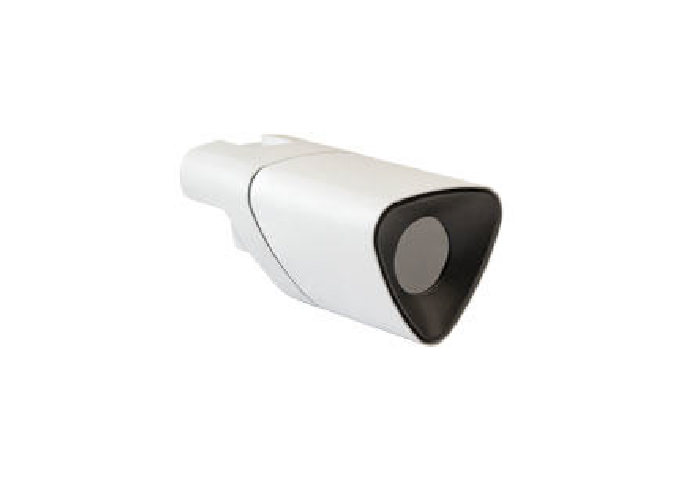
FIR Camera Roadside Sensing System
The sensors used by FIR cameras can recognize pedestrians and vehicles and detect information about their location, speed, and so on. Far infrared emitted by objects is converted into video. Even in situations in which visibility is poor—for example, at night or due to rain or fog—this enables the detection and long-distance sensing of objects and the identification of pedestrians and cars, bicycles, motorcycles, trucks, buses, etc. Information about pedestrians, cars, and so on in blind spots is shared with the Smart RSU and conveyed to the driver, helping prevent accidents.
The Cooperative Road-Vehicle System is Essential for Societal Implementation of Autonomous Driving, but What Exactly Does It Involve?
-
 Senior DirectorDevelopment Department 1
Senior DirectorDevelopment Department 1
Intelligent Transport Systems R&D Division
Systems R&D Group
Corporate R&D Group -
 Senior ManagerSection 2, Development Department 2
Senior ManagerSection 2, Development Department 2
Intelligent Transport Systems R&D Division
Systems R&D Group
Corporate R&D Group
-
 FIR Camera Development EngineerSection 2, Development Department 2
FIR Camera Development EngineerSection 2, Development Department 2
Intelligent Transport Systems R&D Division
Systems R&D Group
Corporate R&D Group -
 Wireless Roadside Device Development EngineerSection 2, Development Department 1
Wireless Roadside Device Development EngineerSection 2, Development Department 1
Intelligent Transport Systems R&D Division
Systems R&D Group
Corporate R&D Group
-

Today you brought the Smart RSU and FIR camera with you. What kind of functions does each of these devices have?
-

The Smart RSU, which I am involved in developing, is a relay device for delivering road information to vehicles. Sensors on FIR cameras detect road information, and by providing this information to cars, the Smart RSU enables safe autonomous driving.
-

Vehicle-centered autonomous driving technology, which detects pedestrians and oncoming cars using in-vehicle cameras, is also evolving remarkably. Still, when objects are located too close to the vehicle, at intersections with restricted visibility, and so on, blind spots inevitably arise. The Smart RSU conveys information to the car that cannot detect if an approach is utilized that originates only in the body of the vehicle itself.
-

If we compare the Cooperative Road-Vehicle System to the human body, the FIR camera is the eyes. First, it perceives the FIR emitted by objects, converts that into video, then AI calculates target information, such as the types and locations of things, and conveys that to the Smart RSU.
-

Another method involves gathering road information using visible light cameras. Still, with these, in the same way as the human eye, objects become harder to perceive at night, and even in daylight, such cameras can be severely affected by the afternoon sun, thick fog, and so on. To reduce such drawbacks, we focused on the heat radiating from objects. If we could use FIR to perceive the heat emanating from things, creating a video of vehicles and pedestrians unaffected by weather conditions or the amount of light would be possible.
-

This approach came about thanks to Kyocera's background in sensor technologies development, didn't it?
-

Yes, it did. I studied laser engineering at university and joined Kyocera because I wanted to conduct research that would enable me to capitalize on remote sensing technologies such as LiDAR. Because Kyocera works on development in various fields, it also brings together researchers with diverse specializations.
-

In that sense, rather than handling Smart RSU and FIR cameras as stand-alone devices, I think the ability to link them together as part of the Cooperative Road-Vehicle System has also arisen because Kyocera has broadened the scope of its development to include communications technology in PHS business and so on. I also came here after working in the field of communications devices, such as smartphones, which is why I am engaged in this research.
-

I see. Of course, you have also begun proof-of-concept tests using the Smart RSU. How were the tests?
-

They were tough (laughs). We are developing roadside infrastructure, so the installation environment is inevitably outdoors. Therefore, the stable detection and supply of information, 24 hours a day, 365 days a year, in locations where unexpected weather changes occur, is a crucial prerequisite for the Cooperative Road-Vehicle System. For this reason, we've also been required to undertake tests for long periods, in various weather and temperature conditions, during the day and at night.
-

Like a kind of training camp from our student days, with everyone gathering together to complete the tests, our teamwork improved even further. We also received some handy comments from people from other companies who collaborated with us on the tests.
-

Yes, we did. The Smart RSU infrastructure device assumes multiple installations at the roadside. Because of this, there are considerable costs involved in undertaking regular inspections and so on. We received a comment that a function would be necessary to diagnose whether the device functions correctly. We would not have gotten this point of view if we had only completed development while staring at a computer screen.
-

FIR cameras are also installed outdoors, so have there been any difficulties with development from that point of view?
-

Yes, the FIR cameras also need to be highly durable. So right now, the team is pursuing durability that can conform with in-vehicle standards. These are rigorous standards for ensuring that problems do not occur with functionality, even if an in-vehicle device experiences excessive vibration or changes in temperature and humidity. So the team responsible for this aspect of development is working very hard.
-

We have been communicating with a company from Israel undertaking the collaborative development of FIR cameras and are investing a lot of effort toward improving durability. This communication had to be in English, so it was tough for the team initially, but we are glad to work on such a global project. Communicating with overseas engineers helped motivate our team and provided exposure to people with different values and cultural viewpoints. Being able to work on international collaborative development from when we are juniors is a unique feature of Kyocera, which has a global business network.
Aiming for Reliability on a Par with Traffic Lights as Indispensable Infrastructure
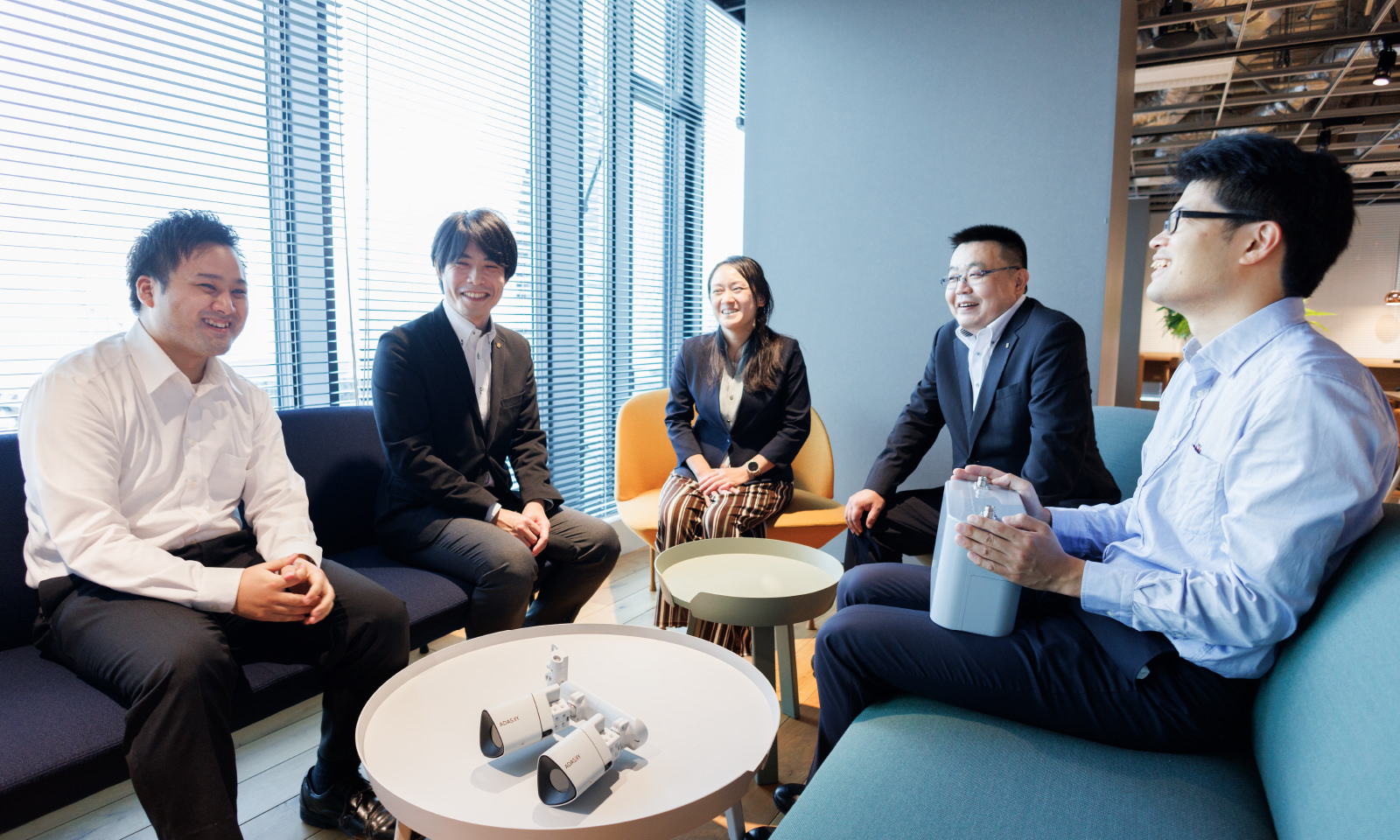
-

As we advance, what kinds of problems will it be necessary to overcome to implement the Cooperative Road-Vehicle System widely in society?
-

To a certain extent, the system has matured in its technical aspects, but we still need to undertake repeated experimentation. Providing safety, a value more important than anything else, is our mission to develop the system to the point at which it can also respond to irregular changes to environments and circumstances normally inconceivable.
-

We have just begun focusing on the manufacturing phase after system development. No matter how high a system's functionality is, mass production is the only way to commercialization, so we are devising efficient manufacturing methods in collaboration with Kyocera's manufacturing team. There are many issues to overcome, but concerning tangibles, Kyocera has a backbone of strength in manufacturing fostered over many years, so we are confident we can build a stable manufacturing system.
-

The Cooperative Road-Vehicle System contains many elements in terms of infrastructure, but there are aspects in which the destinations for its supply could be more specific. It may become similar to a public works project, but local governments from which there is the potential for demand may need more funds. If so, how should it be established and popularized as a business? In these respects, we must focus and continue working on commercialization going forward. An exciting aspect of development is that it continues beyond being able to confirm a function that you had anticipated. We would like to properly implement this system in society and make it something that takes root in people's everyday lives.
-

Raising the system to a level at which it is helpful for people's everyday lives will be an issue in the future. Ultimately, the Cooperative Road-Vehicle System will become as familiar to people as a traffic light. Suppose we can install the system in similar numbers, from the roadside to vehicles. In that case, it should be possible to supplement the information that until now has been insufficient and realize more precise autonomous driving.
-

As well as the number of installations, we would also like to guarantee a high degree of reliability equivalent to traffic lights. It's taken for granted that traffic lights work correctly. So much so that if they break, people wonder why. So we want the Cooperative Road-Vehicle System to be something that has to work as accurately as that. I originally joined Kyocera because I wanted to create things beneficial to society, and I am engaged in this work believing that it is significant and really can fulfill that ambition.
-

Because the obstacles we must overcome are so significant, the experience of managers and the fresh perspective of new employees will be crucial. Therefore, we want to incorporate more and more of the views of new employees and move flexibly through the stages of technological development, proof-of-concept testing, and commercialization.
-

A positive aspect of Kyocera is that fellow engineers work in an environment where they can freely exchange opinions regardless of their experience. As a result, even new team members can independently engage in research, feel a strong sense of responsibility, and feel that what they are doing is worthwhile.
-

Because our new team members are so enthusiastic and ambitious, we managers get inspired by the feeling that we must keep up, creating positive team synergy. So how would you like new team members to engage in development from now on?
-

I lost my grandmother to a traffic accident. Based on that experience, I joined Kyocera with a strong desire to undertake technological development for reducing and eliminating traffic accidents. For that reason, I want to fully realize the degree of reliability on par with the traffic lights we were talking about earlier and do so as soon as possible to create a society where traffic accidents do not occur.
-

When autonomous driving technology becomes a reality, this will help solve the problems faced not just in the movement of people but in distribution, too, and enable us to contribute to the creation of faster, more convenient, and more agreeable lifestyles. Therefore, with this technology as a starting point, I will continue to think in a progressive, challenging way. I want to be a researcher who embodies Kyocera's spirit of craftsmanship—craftsmanship useful to society.
Related Information
Understanding New Challenges and Future Projects
Being Undertaken at Kyocera
Kyocera’s Main Growth Markets
-
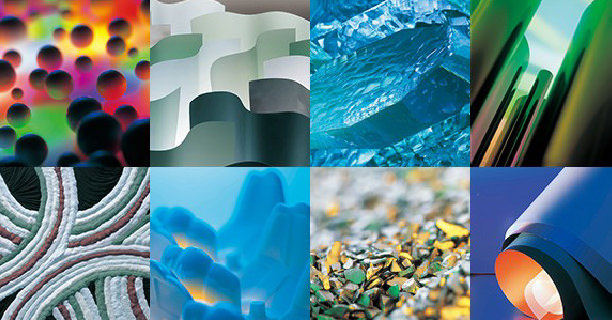 Ever since the company was founded in 1959, Kyocera has engaged in the application and development of advanced ceramic (also known as “fine ceramic”) technology in a wide range of fields, from materials and parts to devices, services, and networks. This site looks at the various technologies shaping the future.
Ever since the company was founded in 1959, Kyocera has engaged in the application and development of advanced ceramic (also known as “fine ceramic”) technology in a wide range of fields, from materials and parts to devices, services, and networks. This site looks at the various technologies shaping the future. -
 Kyocera has been developing market-leading breakthroughs since its very inception. In this website,we present information on Kyocera’s intellectual property and licensing programs that can bring new value to the world.
Kyocera has been developing market-leading breakthroughs since its very inception. In this website,we present information on Kyocera’s intellectual property and licensing programs that can bring new value to the world. -
 Kyocera’s open innovation initiative brings together technologies and ideas from both within and outside the company to create new value and develop new businesses.
Kyocera’s open innovation initiative brings together technologies and ideas from both within and outside the company to create new value and develop new businesses.








